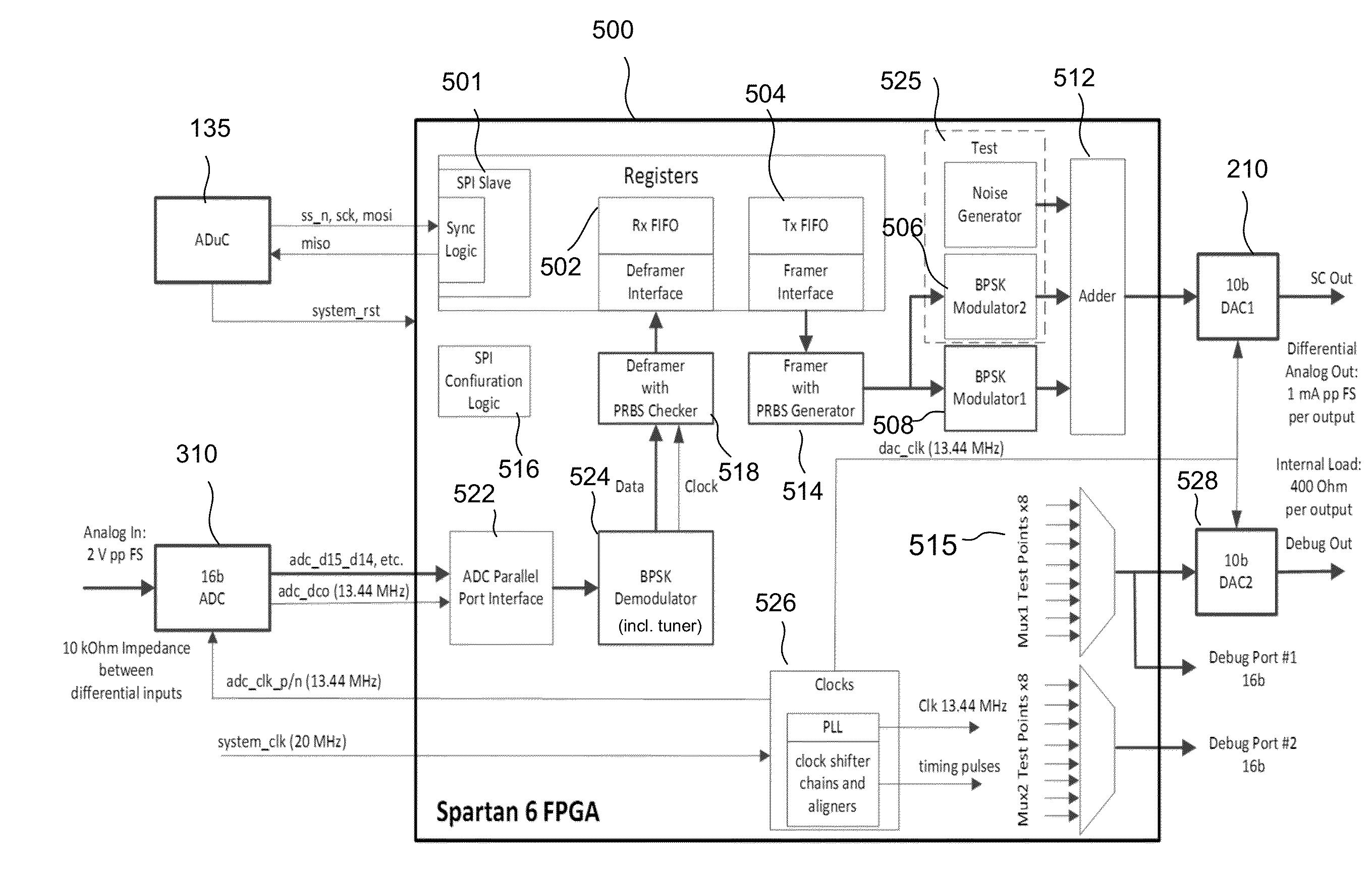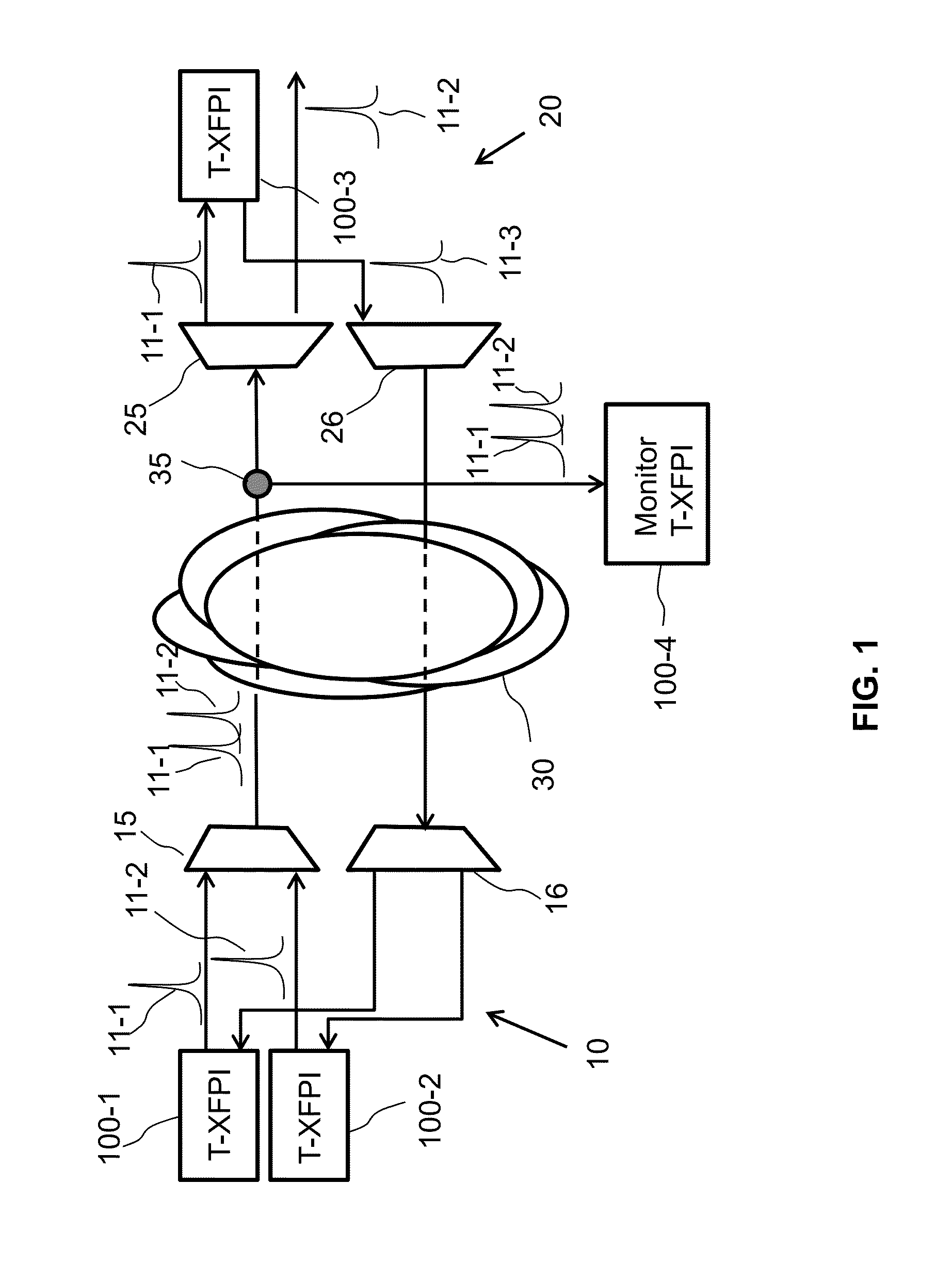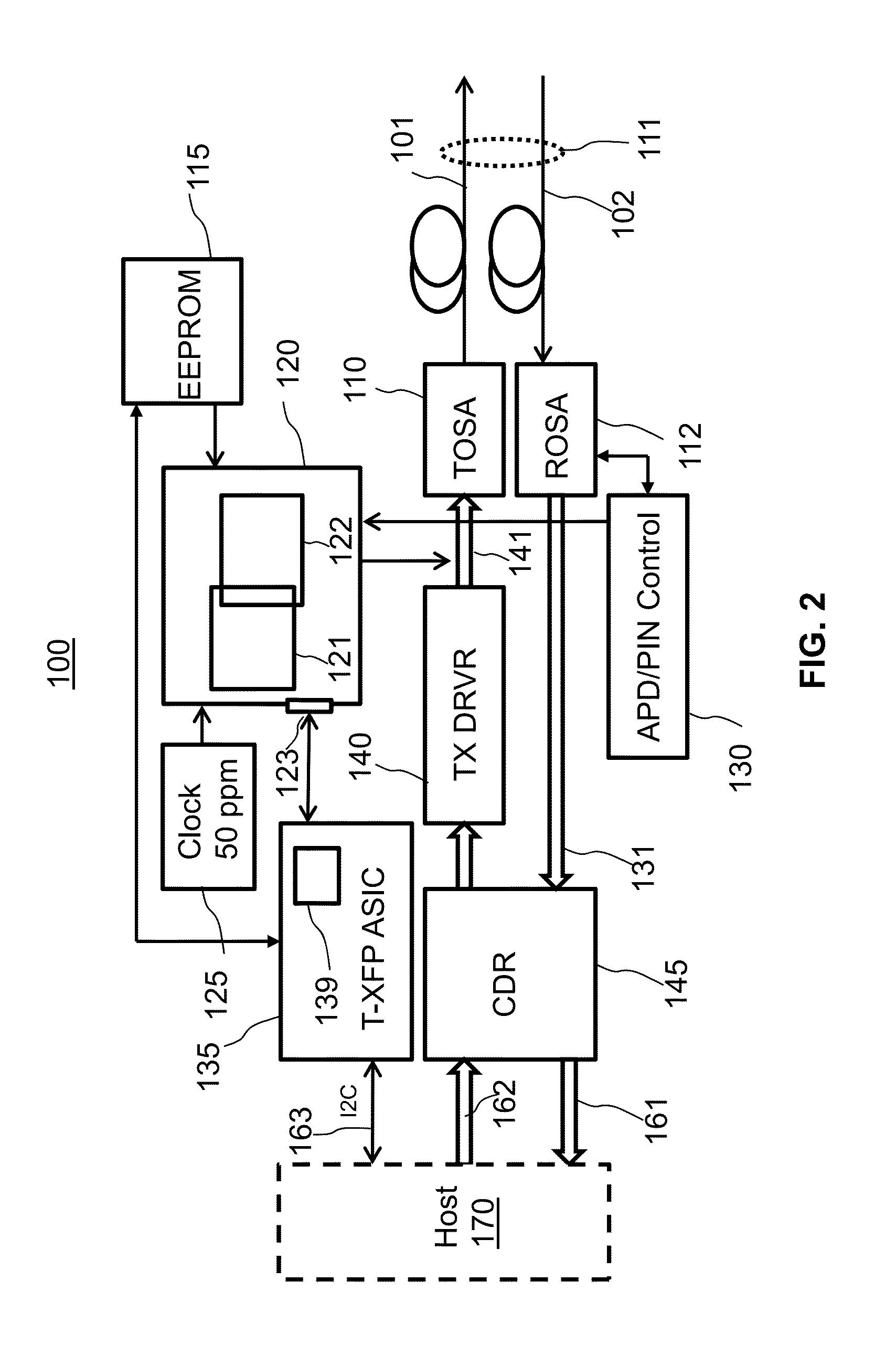Communication between transceivers using in-band subcarrier tones
a technology of optical transceivers and subcarriers, applied in electromagnetic transceivers, wavelength-division multiplex systems, electrical apparatus, etc., can solve the problems of inability to use methods, need to perform the full high speed time division demultiplexing of the entire payload data stream, and relatively low total bandwidth that is available for oob modulation
- Summary
- Abstract
- Description
- Claims
- Application Information
AI Technical Summary
Benefits of technology
Problems solved by technology
Method used
Image
Examples
Embodiment Construction
[0023]The following definitions are applicable to embodiments of the invention: the terms ‘high-speed signal’, ‘high-frequency signal’, ‘high data rate signal’, ‘broad-band signal’ and ‘broad-band data’ refer to data, typically user-originated, and / or corresponding signals that are transmitted over an optical communication link by modulating an optical carrier at a line rate of the link, typically above 100 Mb / s. The terms ‘low-speed’, ‘low-frequency’, ‘low [data] rate’ refer to service data and / or corresponding signals that are transmitted by modulating an optical carrier at a rate that is at least an order of magnitude lower than the line rate, and typically below 50 Mb / s. The term ‘service data’ refers to data that is generated and transmitted for the benefit of the optical communication system itself rather than its users, such as data related to system and / or transceiver configuration, diagnostic and maintenance. The term ‘transceiver’ as used herein refers to a device that inc...
PUM
 Login to View More
Login to View More Abstract
Description
Claims
Application Information
 Login to View More
Login to View More - R&D
- Intellectual Property
- Life Sciences
- Materials
- Tech Scout
- Unparalleled Data Quality
- Higher Quality Content
- 60% Fewer Hallucinations
Browse by: Latest US Patents, China's latest patents, Technical Efficacy Thesaurus, Application Domain, Technology Topic, Popular Technical Reports.
© 2025 PatSnap. All rights reserved.Legal|Privacy policy|Modern Slavery Act Transparency Statement|Sitemap|About US| Contact US: help@patsnap.com



